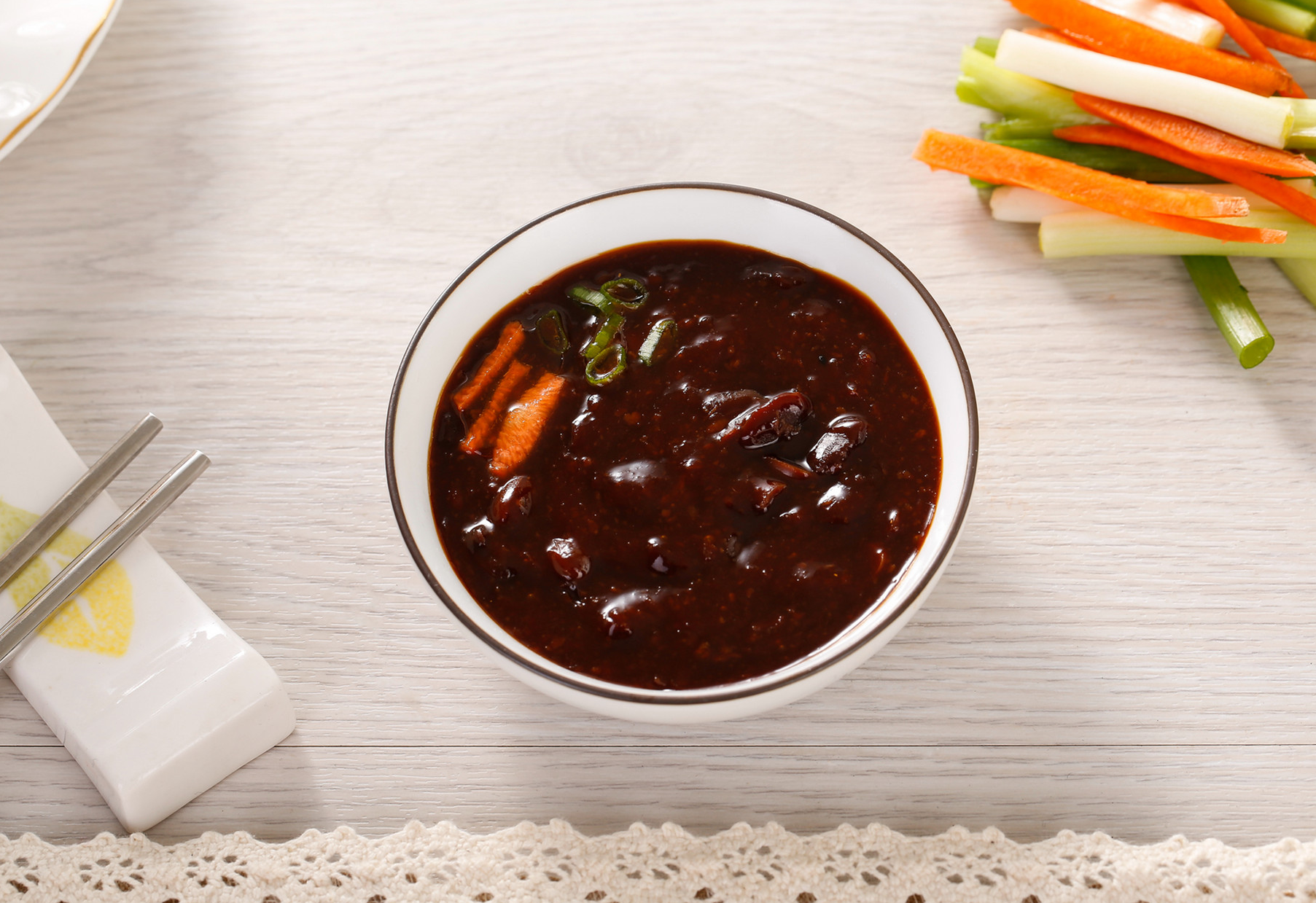Easy Pork Eggplant Recipe
Here comes the incredibly delicious pork eggplant dish! The eggplant is tender and creamy, while the minced pork is bursting with flavor, creating a perfect blend in every bite. It's easy to make, so let’s get started and add this delightful dish to your dining table!

 1 Comments
1 Comments
Pork eggplant is a beloved Chinese home-cooked dish, typically made by cooking eggplant and minced meat (commonly pork or beef) together. The eggplant is carefully cut into small cubes or slices and stir-fried with the cooked minced meat, along with the right amount of seasonings and other ingredients. This dish not only boasts a rich texture but also releases an enticing aroma, making it a favorite among many.
1.Ingredients and Substitutes
Eggplant: One of the main ingredients, providing unique texture and flavor.
Ground Pork: Adds protein and fat, enhancing the overall taste.

Garlic: Adds distinctive aroma and flavor.
Dried Chili Peppers: Provides moderate heat; adjust according to personal preference.
Soy Sauce: Used for seasoning, adding saltiness and umami.
Cornstarch: Acts as a thickening agent, making the sauce richer.
Water: Used for cooking and adjusting sauce consistency.
Yellow Bean Sauce: Adds a savory depth, contributing to the dish's unique flavor.
Sugar: Balances the dish's taste, adjusting sweetness and smoothness.
Rice Vinegar: Provides acidity, enhancing freshness and overall flavor.
Suggested Substitutes
Meat Substitute: If avoiding pork, use beef, chicken, or other meats.
Chili Substitute: Dried chili peppers can be replaced with other types of chili or chili sauce.
Seasoning Substitute: Soy sauce can be substituted with other sauces or seasonings.
Thickening Agent Substitute: Cornstarch can be replaced with potato starch or arrowroot powder.
Bean Sauce Substitute: Yellow bean sauce can be swapped for Doubanjiang (spicy bean paste) or other sauces.
Sugar Substitute: White sugar can be replaced with honey or brown sugar.
Vinegar Substitute: Rice vinegar can be substituted with apple cider vinegar or other types of vinegar.
2.What is Yellow Bean Sauce and Where to Buy It
Yellow bean sauce, also known as soybean paste or doujiang, is a traditional Chinese condiment made from roasted yellow soybeans that are ground, boiled, and fermented. It has a savory-sweet flavor and can be used both as a dip and a cooking ingredient for stir-fries, sauces, or soups. This sauce has a long history in China, dating back to the Western Han Dynasty.

You can find yellow bean sauce in many cities at Asian supermarkets or Middle Eastern grocery stores, where various Asian condiments are typically sold. Additionally, online retailers like Amazon, eBay, and various Asian food websites offer a range of Asian sauces, including yellow bean sauce. Simply search for the desired product on these platforms to purchase it.
3.How to Choose Eggplants
When selecting eggplants for making pork eggplant, keep the following tips in mind:
Color: Look for deep purple eggplants that are uniformly colored and free from blemishes.

Shape: Choose elongated eggplants that are plump, have thin skin, and a smooth surface.
Texture: Gently squeeze the eggplant; a good one should feel firm and springy, not overly soft.
Size: Medium-sized eggplants tend to absorb flavors better, while larger ones may contain more seeds.
Freshness: Check the stem; fresh eggplants should have a green, firm stem.
4.Tips for Making Perfect Pork Eggplant
Prepare the Eggplant: Cut the eggplant into pieces, sprinkle with salt, and let it sit for 10-15 minutes to remove bitterness. Rinse and squeeze out excess moisture.
Choose the Right Ground Meat: Use pork with a balanced fat-to-lean ratio. Marinate for 15 minutes with soy sauce, cornstarch, and cooking wine to ensure tender meat.
Seasoning: Start by sautéing minced garlic until fragrant, then add chopped chili peppers. Next, incorporate the ground pork and stir-fry until it changes color, followed by the eggplant and other seasonings.
Control the Heat: Cook the eggplant over medium-low heat, adding a bit of water to help it cook through while keeping it moist.
Thicken the Sauce: Just before finishing, add a mixture of water and cornstarch, stirring until the sauce thickens to enhance the dish's flavor.
Garnish and Serve: Finish with chopped green onions or cilantro for added color and aroma.
5.How to Store Pork Eggplant
Refrigeration: Once the pork eggplant has cooled, transfer it to a clean, airtight container to prevent air exposure and maintain freshness. If you plan to eat it within 3-4 days, store it in the refrigerator.
Freezing: For longer storage, portion the pork eggplant into freezer bags or airtight containers and place them in the freezer. This way, it can be preserved for 1-2 months.
Reheating: When ready to enjoy, whether from the refrigerator or freezer, reheat the pork eggplant in the microwave or on the stovetop for about 5 minutes, ensuring it heats evenly.
6.More Delicious Recipe Recommendations
Spicy Cumin Tofu: A flavorful dish featuring tofu seasoned with aromatic spices and a kick of heat.
Chinese Pan-fried Fish: Crispy and tender, this dish showcases fresh fish cooked to perfection with a savory sauce.
Vietnamese Spring Rolls: Fresh and vibrant, these rolls are filled with herbs, vegetables, and your choice of protein, perfect for dipping.
Sweet and Sour Chicken: A classic favorite, this dish combines crispy chicken with a tangy and sweet sauce, served with colorful vegetables.
Here’s a detailed step-by-step tutorial for the Pork Eggplant recipe. Let’s get cooking together!
If you enjoy our recipes, please subscribe to our newsletter for more high-quality content and updates!
INGREDIENTS
MAIN INGREDIENTS
- 3 eggplants
- 30g ground pork
ACCESSORIES
- 3 cloves garlic
- 2 small chili peppers
SEASONINGS
- 2 tablespoons soy sauce
- 1 tablespoon starch
- 30g water
- 1 tablespoon yellow soybean paste
- 1 tablespoon sugar
- 1 tablespoon rice vinegar
DIRECTIONS
STEP 1
Prepare the Eggplant: Wash the eggplants and cut them into 3 cm long strips. Salt them and let them sit for 10 minutes, then rinse thoroughly. Steam the eggplant for 15 minutes and set aside.

STEP 2
Make the Sauce: In a bowl, mix 2 tablespoons of soy sauce, 1 tablespoon of yellow soybean paste, 1 tablespoon of sugar, 1 tablespoon of rice vinegar, 1 tablespoon of starch, and 30g of water.

STEP 3
Sauté the Meat: Heat oil in a pan and add 30g of ground pork. Stir-fry until browned, then add minced garlic and sliced chili peppers, cooking until fragrant.

STEP 4
Add the Eggplant: Toss in the steamed eggplant and stir-fry for a few minutes.

STEP 5
Coat with Sauce: Pour in the prepared sauce and stir-fry gently until the eggplant is evenly coated.

Frequently Asked Questions:
1.Why soak eggplant in water before cooking?
Soaking eggplant before cooking has several benefits:
Prevents Oxidation: The phenolic compounds in eggplant can cause browning when exposed to air. Soaking slows this process, keeping the eggplant vibrant.
Reduces Greasiness: Soaking allows the eggplant to absorb water, lowering its oil absorption during cooking, which prevents it from being overly greasy.
Improves Texture: Soaking removes some alkaline substances, reducing bitterness and making the eggplant more tender.
Less Oil Usage: Soaked eggplant absorbs less oil during cooking, making the dish healthier.
2.What are the secrets to cooking eggplant?
Choose Quality Eggplant: Look for smooth, brightly colored eggplants without blemishes. Smaller ones are usually more tender and less bitter.
Soaking Method: Soak cut eggplant in salted water for about 15-20 minutes to remove bitterness and excess moisture, reducing oil absorption.
Proper Cutting: Cut eggplant into uniform pieces to ensure even cooking.
Control Cooking Time: Use medium heat to fully cook the eggplant, ensuring it becomes tender without being undercooked.
Seasoning Pairing: Use soy sauce, doubanjiang (fermented bean paste), and garlic for flavor, and balance with a bit of sugar and vinegar.
Sauce Reduction Technique: Near the end of cooking, add a little water or broth, then reduce until thickened to enhance the dish's flavor.
Pairing Ingredients: Combine eggplant with proteins (like pork or beef) or other vegetables (such as bell peppers or onions) to add layers and nutrition.
3.Is soaking eggplant necessary before frying?
Soaking eggplant before frying isn’t essential but offers some advantages:
Reduces Bitterness: Soaking helps remove bitterness, especially from older eggplants.
Lowers Oil Absorption: Soaked eggplant absorbs some water, reducing its oil absorption during frying, leading to a healthier dish.
Maintains Texture: Soaking makes the eggplant firmer, resulting in a better texture after frying.
4.Should you peel eggplant before roasting?
Peeling eggplant before roasting is not necessary and depends on personal preference and cooking method:
Keep the Skin: The skin is nutritious and helps maintain the shape and moisture during roasting, enhancing flavor. This is particularly true for smaller, tender eggplants.
Peel It: If you prefer a finer texture or are using older eggplants, peeling can reduce bitterness and fibrousness. Additionally, peeled eggplant absorbs seasonings better.
Recipe analyzer
- Recipes: Easy Pork Eggplant Recipe
- Main Ingredients:4
- Servings per recipe:1
- Servings size:1.8 kg
-
Energy (calories):550 kcal
-
Protein:26.19 g
-
Fat:9.42 g
Why gray?

-
Carbohydrates:108.16 g
-
Protein: 14%78 kcal
-
Fat: 15%83 kcal
-
Carbohydrates: 71%387 kcal

The ratio shows whether the proportion of both fatty acids in your diet is optimal. Red color means too much of Omega 6 or too little of Omega 3. The data are rounded off and approximate.











1 REVIEWS